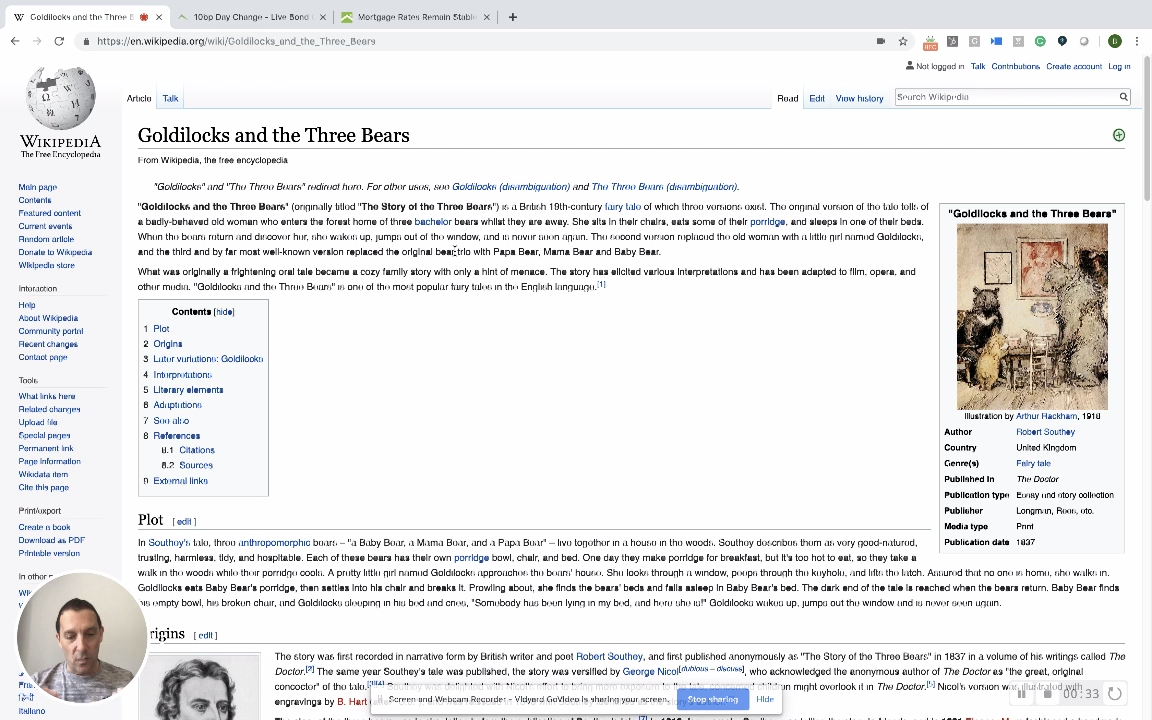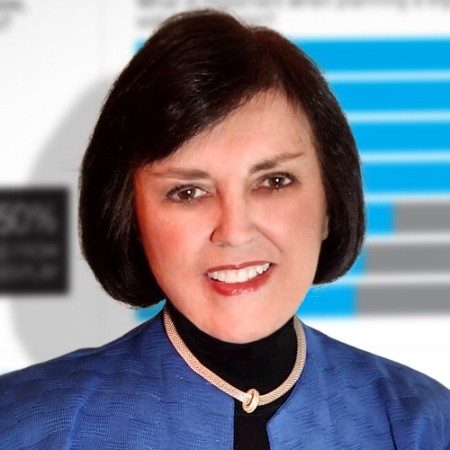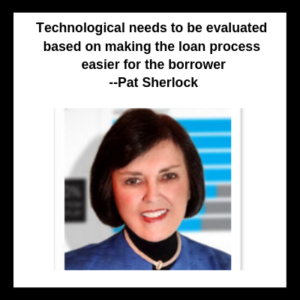TRENDING WHITEPAPERS,VIDEOS & MORE

matt
Housing Market Reminds Bodnar of Goldilocks Fable: Not Too Hot, or Cold, But Just Right
- Wednesday, 03 April 2019

https://youtu.be/MkzfYueEr0k
Hi Bill Bodnar here with the Mortgage Market Guide. Thanks for tuning in to the MMG recap.
So up on the screen, you can see another week and another week of low rates. Rates continue to hover near 14-month lows. We came a little bit off the best levels last week. But again, just another great week, and what I'd like to share with you is what I think is happening.
Right now we are into the spring home-buying season.
It's what I call the Goldilocks scenario, right Goldilocks: We're not too hot, not too cold. Kind of just right and that's what's happening in the housing market.
So, there's a list of things I think are going to really make this spring housing market likely the best in the last couple of years. You know, when we look at the last couple years, there were affordability issues. There was low-housing inventory.
 This year's a bit different, so I'm going to run through these. No. 1, we know the Fed is not going to raise rates in 2019. They said that. In fact, there's a better chance of a Fed rate cut in 2019 than a hike, so that's a big change from where we were just a few months ago.
This year's a bit different, so I'm going to run through these. No. 1, we know the Fed is not going to raise rates in 2019. They said that. In fact, there's a better chance of a Fed rate cut in 2019 than a hike, so that's a big change from where we were just a few months ago.
No. 2, inflation is subdued. Inflation is not a threat. if inflation doesn't tick higher, long-term rates, like mortgages, can’t tick higher.
No. 3, home prices are moderating. The gains are moderating. This is a big deal because this goes right to the affordability piece.
Home prices a few years back we're running at 10 percent, 15 percent a year, and wages were only rising at two percent, so now they're much closer. Home prices are gaining at four percent to five percent. Wages are closer to four percent, so there’s much more of an equilibrium.
[adbutler zone_id="326324"]
[adbutler zone_id="326327"]
The labor market remains solid. I mean we are seeing unemployment at 50-year lows. Wages are rising because of that tight labor market. People buy homes because they have a job, not because interest rates are low.
Another one that doesn't get a lot of play: Europe can't get out of its own way. We've been talking a lot about how Europe has been struggling, and with the economy struggling, that makes their bond yields low, real low, and there's only a couple of big bond markets on the planet that investors can go to. Germany. I think of Japan and those yields are zero to negative.
So, you know, seeing the 10-year note at 2.5 percent; it's pretty darn juicy, and so that's going to keep mortgage rates at low levels thanks to what's going on in Europe.
Next, the stock market is near all-time highs. That has a positive wealth effect. People feel wealthy. You know even if it's locked up in 401(k)s and IRAs they feel wealthy. They are more apt to buy and believe me there’s a wealth effect happening right now. People feel really good.
Also, consumer confidence is rising again. Why? Pretty much for a lot of these factors. You know the Fed's out of the way. Stocks are rising. Interest rates are low. The prospect of getting a job feels good, and then finally, home-loan rates sit now at 14-month lows—for a lot of the reasons that we just mentioned.
And there's no pressure to put them up much higher, much lower, I should say. So when you look over the foreseeable future, there's a difficulty of seeing rates get much better. But at the same time, it's really difficult to see them much higher.
We have this kind of Goldilocks scenario, as you move into this housing market, and it's not just the spring housing. This is for the foreseeable future, so I think it's a really good story that you need to be sharing with not just clients, but also your partners.
And, when we take a look at the chart, you know again this peak from last week that was a 14-month high, and we're a little bit off of it, but still an unbelievable scenario.
I hope this finds you well. Have yourself a great weekend. We'll be back at it soon.
Bye for now.
Read more...Heard Around the Industry: Arch MI Updates RateStar
- Wednesday, 03 April 2019

Arch Mortgage Insurance Company has updated their premium pricing tool, RateStar, to provide express quotes and customized pricing options through a portal. RateStar was launched 10-years ago as a tool that could evaluate individual loan risk with more precision than any rate sheet.
RateStar offers a mortgage insurance buydown feature, and its buydown feature allows loan officers to customize a mortgage insurance premium payment for each borrower. The portal is available on through most loan origination systems and pricing engines, as well as through Arch MI’s origination platform, CONNECT, and its downloadable mobile app.
[adbutler zone_id="326324"]
[adbutler zone_id="326327"]
“RateStar continues to evolve as we apply our decade of expertise and customer feedback,” said Michael Schmeiser, Arch MI’s President and CEO. “RateStar offers an express rate quote option that returns rate quotes faster and requires far fewer fields. Users have a full range of MI pricing options to choose from. RateStar provides a streamlined, uncluttered customer experience with design enhancements based on lender preferences.”
Calyx Enhances Technology
Calyx Software has enhanced Zip, a point-of-sale platform, to provide larger organizations with greater control and transparency over individual user profiles.
With this update, banks, credit unions, and non-bank lenders can designate a chief administrator, who has complete control to oversee, manage and standardize all of the company’s individual user accounts with ease. He can standardize the content on each of their Zip user websites to ensure consistency and compliance with company policies. In addition, the administrator can oversee activity and billing from all users, generate a single billing report, and set up ACH payment.
Read more...What Can Lenders Learn from a University’s Adoption of Robots?
- Tuesday, 02 April 2019

By Pat Sherlock
A recent Washington Post article highlighted George Mason University's new program where Starship Technologies installed robots on the campus to deliver food to students.
 The article mentioned how successful the robots were in driving students to eat breakfast, a meal that is usually skipped 88% of the time by undergraduates. In my view, the most interesting part of the story was that the university was surprised how quickly the service was adopted by students.
The article mentioned how successful the robots were in driving students to eat breakfast, a meal that is usually skipped 88% of the time by undergraduates. In my view, the most interesting part of the story was that the university was surprised how quickly the service was adopted by students.
One of the reasons for the program's success was that students were already familiar with using phone apps to access food delivery services. Not only did the program improve the students' breakfast consumption, but it increased the school's profits on food sales. Everyone involved benefited. I think there is an important lesson here for mortgage bankers.
Last week, there were many stories from the MBA's Tech conference centering on how technology is not delivering a positive return on investment for mortgage companies.
Chart after chart showed how the cost to originate has skyrocketed since the Great Recession, causing the industry to become less profitable. One of the main discussion points was that the investment of millions of dollars for technological improvements has not produced a significant decrease in origination costs.
As a result, many executives feel they have been sold a bill of goods by technology companies.
[adbutler zone_id="326324"]
[adbutler zone_id="326327"]
Another storyline from the conference was that newer technology was difficult to integrate with older legacy systems and how that has led to an epic failure to decrease closing time. All of these comments are certainly relevant based on my conversations with mortgage executives, but I think companies are focused on the wrong thing.
Too often, success of technological investments is only viewed in terms of reduction of a lender's costs, and not in how it makes the loan process easier for the borrower. The real issue for the mortgage industry is how do we make the home buying experience as convenient as George Mason University made eating breakfast for students?
If a university was willing to think outside the box, couldn't lenders do the same thing? Maybe it is time to broaden our justification for technology to encompass how it can create a more proactive customer experience by saving borrowers time and effort.
Rarely do I hear executives talk about what their firms are doing to make the loan process easier for their customers and prospects. In today's world where there doesn't seem to be enough time in each day to fit in work and life obligations, convenience and ease of use are important commodities.
Too many originators believe that consumers only care about price.
And too many companies talk about their slim profit margins, something they say is beyond their control. In my conversations with originators and managers, I hear these types of comments on a near daily basis. If consumers were only concerned with price, everyone would be driving Kias—which is obviously not the case. While price and profit margins are important business issues, so are delivering value and a great customer experience.
Industry leaders such as Apple and Amazon have built their businesses based on being easy to deal with, not necessarily by having a certain price point. What I find interesting is that Amazon and other firms not only make their selling process easy, but they anticipate what consumers may want by using data collection. It is clear that these companies are constantly evaluating and redefining what time and convenience means to their buyers.
In my opinion, our industry gets fixated on one issue. Right now, the hottest topic is reducing our average closing time to less than 45 days. While that is critical, I haven't heard a lot of conversations about anything else.
I certainly don't hear lenders talking about whether their originators are capable and knowledgeable when they interact with prospects and borrowers. It certainly seems that technology can speed the process, but it is our interactions with other human beings that drive the customer experience.
While processing a home loan isn't as simple as having breakfast delivered by a robot, it can be made easier than it is now. Companies must revise their thinking by asking "What does the customer value and how can we deliver it to them?"
About the Author: Pat Sherlock is the founder of QFS Sales Solutions, an organization that help organizations improve their sales talent management and performance. For more information, visit https://patsherlock.com
Read more...




